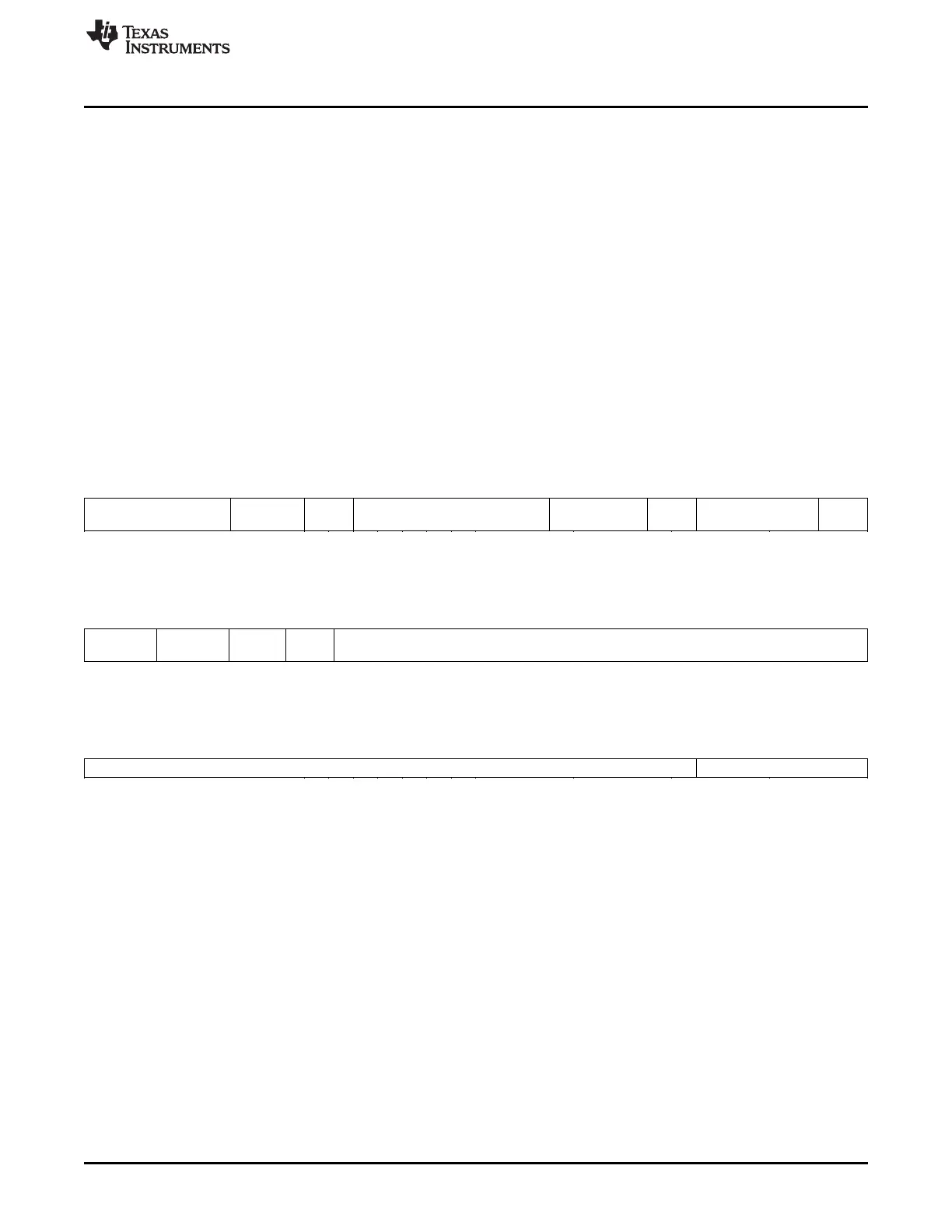www.ti.com
Instruction Set
1067
SPNU563A–March 2018
Submit Documentation Feedback
Copyright © 2018, Texas Instruments Incorporated
High-End Timer (N2HET) Module
23.6.3.2 ACNT (Angle Count)
Syntax ACNT {
[brk={OFF | ON}]
[next={label | 9-bit unsigned integer}]
[reqnum={3-bit unsigned integer}]
[request={NOREQ | GENREQ | QUIET}]
edge={RISING | FALLING}
[irq ={OFF | ON}]
[control={OFF | ON}]
[prv={OFF | ON}]
gapend ={25-bit unsigned integer}
data={25-bit unsigned integer}
}
Figure 23-112. ACNT Program Field (P31:P0)
31 26 25 23 22 21 13 12 9 8 7 1 0
0 Request
Number
BRK Next program address 1001 Edge
select
Reserved Int.
ena
6 3 1 9 4 1 7 1
Figure 23-113. ACNT Control Field (C31:C0)
31 29 28 27 26 25 24 0
Res. Request
type
Control Prv. Gap End
3 2 1 1 25
Figure 23-114. ACNT Data Field (D31:D0)
31 7 6 0
Data Reserved
25 7
Cycles Two, as follows:
• First cycle: Angle increment condition and gap end comparison.
• Second cycle: Gap start comparison.
Register modified Register B (angle value)
Description This instruction defines a specialized virtual timer used after SCNT and
APCNT to generate an angle-referenced time base that is synchronized to an
external signal (that is, a toothed wheel signal). ACNT uses pin HET[2]
exclusively. The edge select must be the same as the HET[2] edge which was
selected in the previous APCNT.
ACNT refers to the same step width selection that the previous SCNT saved
in flags SWF0 and SWF1 (see information on SCNT).
ACNT detects period variations of the external signal measured by APCNT
and compensates related count errors.
